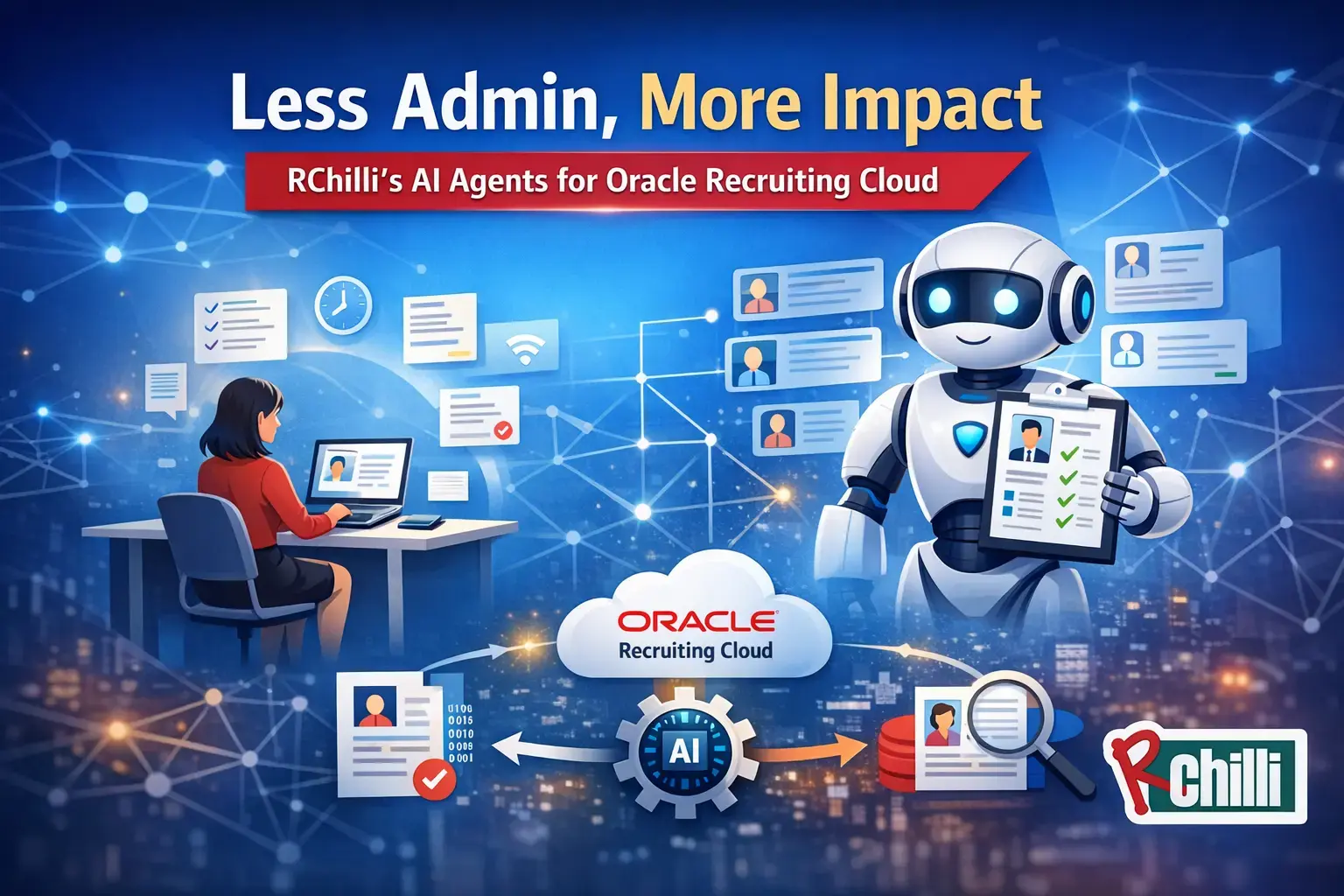How RChilli Redact & Design Helps Build Inclusive Teams
by Sneh Lata

In the evolving landscape of recruitment, organizations are increasingly prioritizing diversity and equity. Yet, even with these goals in mind, unconscious bias can subtly impact hiring decisions—especially during the initial resume screening phase. Without intending to, recruiters might be influenced by factors unrelated to a candidate’s capabilities, such as name, gender, photo, or educational background.
RChilli Redact & Design addresses this challenge directly. It equips hiring teams with the ability to assess candidates solely based on qualifications and potential—by removing all personally identifiable information (PII) from resumes before they’re reviewed. This shift promotes fair evaluation and helps organizations build stronger, more diverse teams.
The Challenge: Unconscious Bias in Resume Screening
Despite best intentions, unconscious bias continues to influence how resumes are reviewed—often in subtle, unrecognized ways. Even experienced hiring professionals may inadvertently allow personal impressions to shape early decisions, especially when certain details stand out during initial screening.
Some of the most common challenges include:
-
Preference for Recognizable Brands or Institutions
Candidates from well-known companies or prestigious universities may receive undue advantage, regardless of their actual suitability for the role. -
Assumptions Based on Identity Markers
Names, photos, gender indicators, or nationality cues can trigger unconscious judgments about a candidate’s background, communication style, or cultural fit. -
Bias Toward Familiar Presentation Styles
Formatting, writing tone, or document structure that feels “comfortable” may be favored—potentially disadvantaging equally qualified candidates with different professional norms. -
Applicant Hesitation Over Privacy
With growing concerns around data security, candidates may leave out personal details—leading to incomplete evaluations that can affect their chances. -
Lack of Visibility into Diversity Metrics
Without consistent reporting and measurement, it becomes difficult to understand how bias may be affecting hiring trends over time.
These influences can quietly distort hiring pipelines, causing qualified candidates to be overlooked simply because their resumes don’t “look right” at first glance. That’s why organizations committed to equitable hiring are turning to solutions like RChilli Redact & Design to bring objectivity and fairness into the earliest stages of candidate evaluation.
The Solution: RChilli Redact & Design Enables Objective Hiring at Scale
The Redact & Design is purpose-built to support fair and skills-focused recruitment. Eliminating identifiable information that can introduce bias—consciously or unconsciously—allows hiring teams to evaluate candidates solely based on their qualifications, experience, and professional merit.
This resume anonymization solution is more than a filter—it enables equitable hiring practices that align with diversity and inclusion goals without disrupting existing workflows.
Here’s how RChilli Redact & Design delivers value:
-
Redaction of Personally Identifiable Information (PII)
Crucial details such as names, gender, email addresses, phone numbers, photos, and physical locations are automatically removed. This prevents initial screening decisions from being influenced by factors unrelated to job performance. -
Preservation of Resume Format and Tone
Each resume's original structure, layout, and writing style are maintained. This ensures that candidates’ individuality—how they express themselves professionally—remains visible, while removing the risk of personal bias. -
Neutral Representation of Brands and Institutions
Employer names and academic affiliations are replaced with general descriptors like “Financial Services Organization” or “Engineering Program”. This ensures that evaluation is based on responsibilities, achievements, and relevance to the role—not the perceived prestige of the brand. -
Insightful Reporting to Track Diversity Efforts
The platform provides actionable reports that show how anonymized hiring practices are shaping shortlisting patterns. These insights help organizations measure progress toward diversity and inclusion objectives and identify areas for continued improvement.
How It Works: A Practical Workflow for Bias-Free Screening
RChilli Redact & Design is designed to integrate effortlessly into your hiring ecosystem, making it easy for teams to adopt and scale fair hiring practices. Here’s a step-by-step look at how the process works:
Step 1: Seamless Integration with Your HR Tech Stack
The solution connects directly with your existing Applicant Tracking System (ATS) or HR software. No major configuration or overhaul is needed—just a simple setup to get started.
Step 2: Upload Candidate Resumes
Whether you're processing a few resumes or importing a bulk dataset, the platform accepts files in volume. This flexibility ensures consistent screening standards across all candidate submissions.
Step 3: Automated Anonymization and Brand Neutralization
Once uploaded, the system automatically redacts personally identifiable information (PII)—such as name, gender, contact details, photos, and address—and replaces company or university names with neutral descriptors. The original format and writing style of each resume are retained to preserve authenticity.
Step 4: Review Based Solely on Skills and Experience
Recruiters assess anonymized resumes without distractions or preconceived notions. This allows for a merit-based evaluation focused entirely on a candidate’s qualifications, accomplishments, and relevance to the role.
Step 5: Share Clean Profiles with Hiring Managers
Anonymized resumes are forwarded to hiring teams for structured and unbiased decision-making. With identity removed from the equation, hiring managers can collaborate on candidate selection with a greater focus on fit and potential.
What Organizations Are Experiencing with RChilli Redact & Design
Companies that have adopted RChilli Redact & Design are reporting measurable improvements across several key areas of their hiring process:
-
Greater Diversity in Candidate Pools
By removing identity markers from resumes, employers are attracting and shortlisting a wider range of candidates—resulting in more transformative hiring and representative talent pipelines. -
Reduction in Screening Bias
Biases that typically influence early-stage resume reviews—consciously or unconsciously—are significantly minimized, leading to more equitable shortlisting practices. -
Stronger Candidate Confidence
Candidates feel reassured knowing their personal information is handled with discretion and not used as a basis for evaluation. This increases trust and enhances the employer brand. -
Faster, More Objective Hiring Decisions
With resumes evaluated solely on skills and experience, hiring managers are able to make clearer, more consistent decisions—reducing delays in the recruitment cycle. -
Improved Compliance with Data Privacy and D&I Standards
The anonymization process aligns with global data protection regulations (like GDPR) and supports internal diversity and inclusion benchmarks, making audits and reporting more robust.
Final Thoughts
RChilli Redact & Design solution empowers hiring teams to focus on what truly matters—skills, experience, and potential—by removing personal details that can introduce unconscious bias. It’s a practical, low-effort adjustment that leads to more inclusive hiring outcomes and builds trust with candidates.
For organizations committed to fair evaluation and diverse representation, this solution offers a clear path forward. It helps ensure every applicant is considered on merit, not assumptions.
If your goal is to create a more equitable hiring process, strengthen your talent pipeline, and stay aligned with compliance and D&I standards, RChilli Redact & Design is a solution worth implementing.





.webp)
Leave a Reply